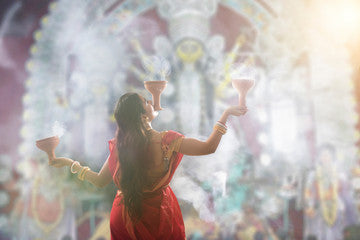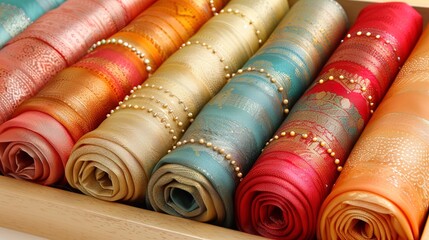Of Palaces and Patterns: Balaram Saha’s Vintage Jamdani Sarees Inspired by Old Dhaka’s Glory
Introduction: Where Threads Remember the Past
Among the many treasures of Bengal’s handloom legacy, none shine brighter than the Dhakai Jamdani saree. Each thread is a memory, each motif a reflection of centuries-old craftsmanship. Known as the crown jewel of Bengal’s weaving tradition, Jamdani has graced queens, poets, and aristocrats through generations. Its birthplace — Old Dhaka — once echoed with the rhythmic clatter of looms that produced some of the finest textiles the world had ever seen.
Today, that golden era finds a new voice through the Balaram Saha Handloom Saree Store, which has dedicated itself to reviving the artistic grandeur of vintage Jamdani sarees. These masterpieces don’t merely adorn; they narrate tales of royal palaces, Mughal ateliers, and Bengal’s timeless bond between fabric and soul.
The Legacy of Dhakai Jamdani: Woven in Royalty
The story of the Jamdani saree dates back over 2,000 years, finding mention in ancient Sanskrit texts and Mughal chronicles. Derived from the Persian words Jam (flower) and Dani (vase), the name itself is poetic symbolic of the floral motifs that define its beauty.
Old Dhaka, under the Mughal empire, was the epicenter of this weaving excellence. Patronized by emperors like Akbar and Jahangir, Jamdani weaving flourished under royal supervision. The sarees were prized possessions of queens and courtesans, draped in luxurious threads that shimmered under candlelight. Each piece took months to create, with weavers laboring under oil lamps to bring ethereal patterns to life.
What made Old Dhakai Jamdani extraordinary was its combination of translucent muslin base and ornate motifs woven without the aid of modern machinery. The result was fabric so delicate that it was once said a six-yard Jamdani could pass through a ring.
The Weaving Process: A Symphony of Patience and Precision
Weaving a Dhakai Jamdani saree is no less than creating a painting. The technique, known as supplementary weft weaving, involves adding intricate motifs by hand while the base fabric is being woven. Each motif is inserted using small bamboo sticks, with the artisan following a graph-like pattern memorized over years of experience.
A single saree may take two to six months to complete, depending on the complexity of its motifs known as butis. Traditional patterns include the Tepchi (straight lines), Kalka (paisley), Butidar (scattered floral motifs), and Tercha (diagonal designs). Some elaborate Jamdanis, such as the Shabnam and Jhuna, are woven so finely that their transparency resembles mist.
At Balaram Saha, artisans continue this age-old process on traditional pit looms. Their looms echo with rhythm, their fingers dance over threads crafting sarees that feel as light as air yet hold centuries of culture.
Balaram Saha: Reviving the Royal Weaves of Dhaka
In the heart of Gariahat, Kolkata, the Balaram Saha handloom saree store has become synonymous with Bengal’s textile heritage. While modern markets often chase machine perfection, Balaram Saha chooses the path of handwoven authenticity. The brand’s collection of vintage Jamdani sarees pays homage to Old Dhaka’s forgotten glory.
Their weavers, many of whom descend from traditional Jamdani families, continue to uphold techniques that date back centuries. Through careful design innovation and sustainable practices, Balaram Saha online has reintroduced these regal weaves to new generations blending old-world intricacy with modern sensibilities.

The Royal Influence: Palaces, Patterns, and Prestige
During the Mughal and Nawabi eras, Jamdani sarees symbolized status and refinement. In the courts of Dhaka and Murshidabad, aristocratic women would commission customized Jamdanis with motifs inspired by palace gardens jasmine blooms, mango leaves, and fish scales. These designs reflected not only beauty but also Bengal’s rich symbolism: prosperity, fertility, and divinity.
At Balaram Saha, each vintage Jamdani saree draws inspiration from those royal aesthetics. Whether it’s the shimmering zari butidar motifs of Shonar Pahar, or the subtle floral geometry of Nil Tara, every pattern captures the architectural grace of Bengal’s palatial past. The sarees are not just weaves they are wearable heritage.
The Old Dhaka Aesthetic: The Art of Muslin Transparency
One of the most defining characteristics of Old Dhakai Jamdani was its muslin base, often so fine that it felt like woven air. This lightweight texture was ideal for Bengal’s humid climate, offering comfort without compromising elegance.
Modern Jamdanis from Balaram Saha preserve that same breathability. Their muslin jamdani sarees are crafted with pure cotton or blended silk yarns to recreate the gossamer lightness of Old Dhaka’s originals. When draped, they flow effortlessly echoing the rhythm of Bengal’s monsoons and melodies.

The Evolution of Jamdani Motifs: Tradition Meets Innovation
While traditional motifs remain the heart of Jamdani, Balaram Saha has reinterpreted them to suit contemporary aesthetics. The motifs that once adorned royal palaces now find expression in modern designs that blend heritage with versatility.
Popular motifs featured in Balaram Saha’s Jamdani collection include:
-
Chand Tara (moon and star) – representing harmony and spirituality.
-
Anchal Butidar (ornate pallu designs) – inspired by royal drapes and temple art.
-
Jaal (lattice weave) – symbolizing unity and continuity.
-
Nilambari (blue weave) – reminiscent of the skies over Old Dhaka.
Each design preserves the symmetry and soul of traditional Jamdani while introducing subtle modernity making these sarees timeless yet contemporary.
The Cultural Renaissance: Jamdani as a Symbol of Identity
Jamdani weaving is more than a craft — it is an identity deeply embedded in Bengal’s cultural consciousness. In 2013, UNESCO recognized Jamdani weaving as an Intangible Cultural Heritage of Humanity, honoring the artistry of Bengali weavers.
Through Balaram Saha, this heritage finds continuity. Their initiatives empower rural artisans, provide fair wages, and ensure that young weavers inherit both skill and pride. By wearing a Balaram Saha Jamdani saree, you become part of this cultural revival draping yourself in the spirit of Bengal’s resilience and artistry.
Styling the Vintage Jamdani: A Regal Revival
The elegance of Jamdani lies in its versatility. Whether it’s a formal event, cultural festival, or intimate gathering, a Balaram Saha vintage Jamdani saree radiates effortless grace.
Styling Inspirations:
-
Classic Heritage Look: Pair a white Dhakai Jamdani saree with red borders, temple jewelry, and a sleek bun for a traditional Bengali aesthetic.
-
Regal Evenings: Choose a black or indigo soft Jamdani saree with zari motifs for evening celebrations.
-
Contemporary Minimalism: Drape a pastel-hued muslin Jamdani saree with a high-neck blouse and silver accessories for an understated, modern charm.
-
Wedding Elegance: Opt for a Jamdanis with golden threadwork reminiscent of Old Dhaka’s royal ateliers for a timeless bridal or festive ensemble.
Every fold and pleat of a Balaram Saha saree carries with it not just beauty, but history — a lineage of artistry reborn for the modern connoisseur.

The Revival of Old Dhakai Glory: Balaram Saha’s Mission
What sets Balaram Saha’s Jamdani collection apart is its dedication to heritage preservation. The brand actively collaborates with weaving clusters in West Bengal and Bangladesh, ensuring authentic production methods are followed. Every saree is handwoven on traditional looms, dyed with natural pigments, and finished without synthetic enhancements.
Their mission is not just to sell sarees but to safeguard stories. Stories of Old Dhaka’s master weavers, of palaces that once glittered with Jamdani drapes, and of women whose grace brought these patterns to life.
Conclusion: A Legacy Reimagined
In an age dominated by fleeting trends, Balaram Saha’s vintage Jamdani sarees stand as a tribute to permanence to craft that defies time. These sarees are not just fabric; they are fragments of history reimagined for today’s world.
From the royal ateliers of Old Dhaka to the bustling looms of Bengal, Jamdani has traveled across generations, weaving tales of pride, artistry, and identity. Under the care of Balaram Saha Handloom Saree Store, its patterns once again shimmer in the light whispering of palaces, poetry, and the eternal beauty of Bengal’s craft.
To drape a Balaram Saha Jamdani saree is to wear a legacy soft as air, rich as heritage, and timeless as art itself.





